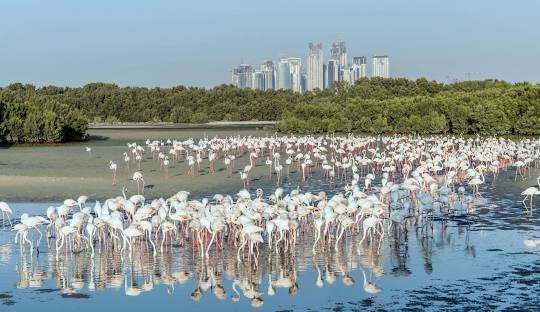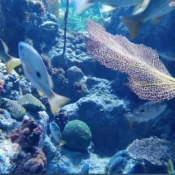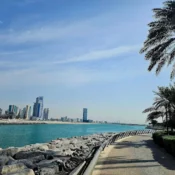If you’re passionate about bird watching, the Ras Al Khor Wildlife Sanctuary is a must-visit in Dubai. Situated near the coastline of Dubai, this sanctuary offers a diverse range of bird species. The sanctuary lies in the mid-Palearctic Ecozone, which serves as a breeding ground in Asia. Waterbirds migrate annually between this breeding zone and non-breeding regions in southern and eastern Africa, making a stop at Ras Al Khor Wildlife Sanctuary along Dubai Creek. This wetland area is just a short distance from the city and presents a unique contrast to a typical sanctuary, featuring mudflats, salt flats, lagoons, and mangroves spread across 6.2 square kilometers, with highways running along its edge.
How Ras Al Khor Sanctuary Began?
The Ras Al Khor Wildlife Sanctuary was established in 1985, and on March 1, 1998, the Dubai government officially declared it a protected area.
What the Sanctuary Offers Visitors?
This wetland is not only a breeding and resting spot for various species of mammals, crustaceans, and fish, but it also serves as a key location for bird watching. The main highlight during the winter months is the presence of pink flamingos, with other birds like the great egrets, grey herons, cormorants, reef herons, and black-winged stilts also making appearances.
There are two bird hides located along the sanctuary’s perimeter, open to the public from 9:00 AM to 4:00 PM. Both hides are equipped with high-powered binoculars, allowing visitors to watch birds as they feed and take flight.
The flamingos, including the elusive Greater Flamingo, are commonly seen near the western hide. Visitors can observe these birds feeding, with park rangers providing food from 9:00 AM to 4:00 PM.
The sanctuary is home to various other bird species, including:
- Eagles
- Ringed Plovers
- Pintails
- Kingfishers
- Teal
- Snipe
These species frequent the hides, especially for a taste of the queen-fish and milk-fish found in the waters. The sanctuary is also known for sightings of raptors like the Great Spotted Eagle soaring above the Zabeel fish ponds.
The southern hide overlooks the lush mangrove forests on the sanctuary’s southern boundary. Visitors can observe birds perched on the mangrove branches or diving into the water beneath the mangroves to catch fish. Wading birds, such as the Broad-billed Sandpipers and Pacific Golden Plovers, are often visible in this area, particularly from April to July.
Over 403 bird species can be spotted from the Mangrove Hide during peak summer. Raptors are also visible in this area, with the Greater Spotted Eagle commonly seen between October and April. Some rare bird species visitors may encounter include the Demoiselle Crane, Red-crested Pochard, Lesser Spotted Eagle, Pied Kingfisher, and Great Crested Grebe.
How to Reach and Best Time to Visit?
The sanctuary is easily accessible by bus, with routes like 55, 63E, 61, 64, and X23 passing nearby. Visitors can also rent a car or take private bus services that offer bulk transport to the sanctuary.
The Mangrove Hide offers the best experience during low tide, when the mangroves remain above the water. Visitors can walk or drive from the Mangrove Hide to the Flamingo Hide.
Timings and Entry Fees
There is no entry fee for the Ras Al Khor Wildlife Sanctuary.
The operating hours vary depending on the season:
- From October to March, the sanctuary is open from 7:30 AM to 5:30 PM.
- From April to September, it operates from 6:00 AM to 6:00 PM.
Solo travelers or groups of fewer than five people do not need a permit to visit the sanctuary. However, larger groups, media members, academic institutions, and organizations are required to obtain a permit from www.dm.gov.ae at least three days in advance, as processing permits takes two working days.
Conclusion
Ras Al Khor Wildlife Sanctuary is a remarkable and serene area amidst the bustling city and urban infrastructure of Dubai. Even those who aren’t avid bird watchers will appreciate the sanctuary’s vibrant ecosystem, making it a worthwhile visit for anyone interested in nature.



